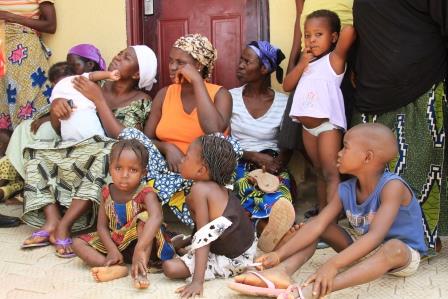Your Excellency Sir; it is indeed one of our lowest moment in the health sector in Nigeria today. With the Federal Government of Nigeria sacking 16,000 resident doctors and suspending residency training as well as the on-going fierce battle of supremacy among health workers unions leaving out the “Patient” helpless and frustrated. In the light of these unfortunate development Monday, August 18th 2014 marks 500 days until the target date to achieve the Millennium Development Goals (MDGs). In 2000 via the United Nations, Nigeria promised that maternal deaths would decrease by 3/4, child deaths would decrease by 2/3 and there would be universal access to reproductive health.
As a partner of the Every Woman Every Child movement, survival rates for women and children around the world continue to be steadily improving. In the last 500 days, we must all do everything we can to reach the MDG targets. Serious and fast action is required to address the shortfalls in investment in maternal, newborn and child health. Each and every one of the 300 commitment makers, including 70 governments must deliver on their promises to the Global Strategy for Women and Children. We must now #Commit2Deliver.
The Nigerian Government specifically committed to:
1. Reduce Maternal Mortality Ratio (MMR) from what it was previously to about 250/100,000 by September 2015.
2. Commit to achieving the goal of a contraceptive prevalence rate (CPR) of 36 % by 2018. Achieving this goal will mean averting at least 31,000 maternal deaths.
3. Ensure the availability of Reproductive Health Commodities including lifesaving drugs for women and newborn in our secondary and primary health care facilities
4. Passage into law the long awaited national health care bill which will boost tremendously financial commitment and allocation to primary health and insurance scheme leading to improved universal coverage.
Mr. President permit me to mention some of my concerns looking at the fact that all the 4 commitments listed above none is achieved as of today. Based on the 2013 National Demographic Health Survey (NDHS) which was officially presented by the National Population Commission on Monday 16th June 2014 in Abuja, Nigeria. Our MMR is put at 576 maternal deaths per 100,000 live births which wasn’t significantly different from the ratio reported in the 2008 NDHS of 545/100,000. It has even gone up rather than gone down. This is the time to reflect and begin to ask the hard questions of why and what are we doing wrong and what can be done to reverse the trend of MMR in Nigeria.
W.H.O’s 2013 published maternal death estimates also corroborated the 2013 NDHS as it reported Nigeria’s MMR as 560/100,000. In trying to understand the high unaccepted MMR, one need to also know some of the outcome indicators that affect MMR. The antenatal coverage for at least one visit was put at 60.6% and for four or more visits was put at 51.5%. These Percentages signifies that almost half of the women population were disenfranchised and it raises the question of equity and coverage in health care. The % of births attended by skilled health personnel was put at 38.1%, it is very poor and a red card for Nigeria being the largest economy in Africa.
Our contraceptive prevalence rate (CPR) is put at 15%. Nigeria on the 11th of July 2012 at a London Summit on Family Planning pledged to “in addition to our current annual commitment of US$3 million for the procurement of reproductive health commodities, we are now committed to provide an additional US$8,350,000 annually over the next four years, making a total of US$33,400,000 over the next four years. This is an increase of 300 percent.” We also committed to achieving the goal of a contraceptive prevalence rate (CPR) of 36 percent by 2018. How realistic is that financial commitment going by unreleased of such funds in 2013?
We need to do more in Reproductive Health, because of the following reasons;
1. Nigeria is one of the 10 worst places in which to be a mother, and has the second highest number of newborn deaths worldwide.
2. One woman out of every 41 Nigerians faces a lifetime risk of death in childbirth. This is in contrast to Ethiopia, where one woman out of 67 faces such a risk.
3. Currently, only 15% of Nigerians married or in-union aged 15-49 use any modern method of contraception. These numbers are shockingly low, and in stark contrast to Ethiopia where the rate is 27%. In Bangladesh 52% of women married or in-union aged 15-49 are using modern methods of contraception.
4. The estimated number of maternal deaths for 2013 is 40,000.
There are only 500 days left to deliver on this promise. We are calling on you as our president to focus on ensuring the 4 listed promises above are realized before September 2015, the last month for the MDGs.
Central to ensuring that such commitments are tracked and budgeted for adequately is a thorough accountability mechanism which civil society is actively engaged in. All global and country-level accountability mechanisms should be effective, transparent and inclusive of all stakeholders. Through working together to achieve our goals, we will go so much further.
We look forward to your continued dedication to prioritizing women’s and children’s health, and to your focus on the specific areas as requested.
This article was 1st published in Daily Trust Newspaper of Tuesday 19th August 2014 by Dr Aminu Magashi




